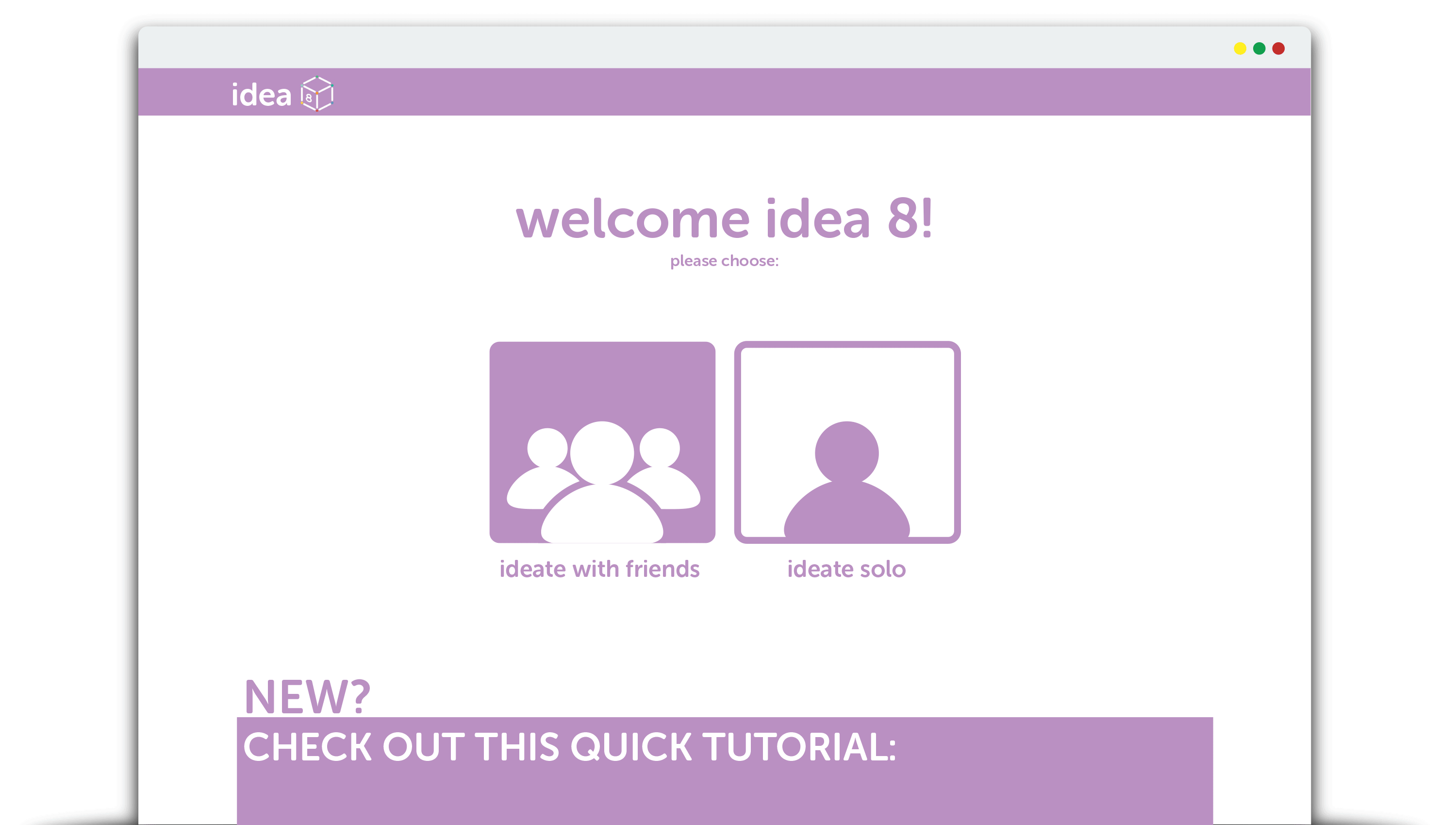Idea8
School Project
A class project by Team Potato
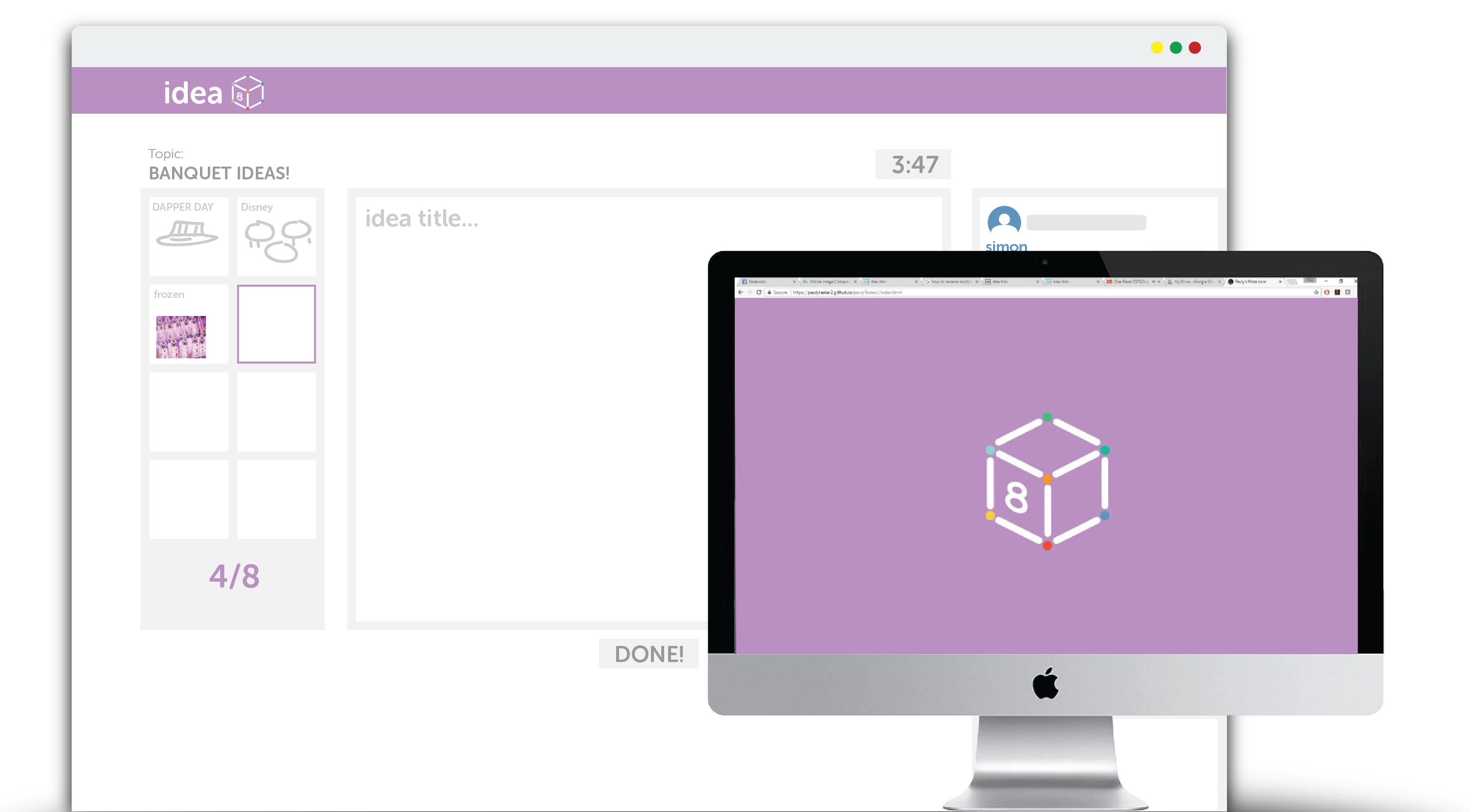
A class project by Team Potato

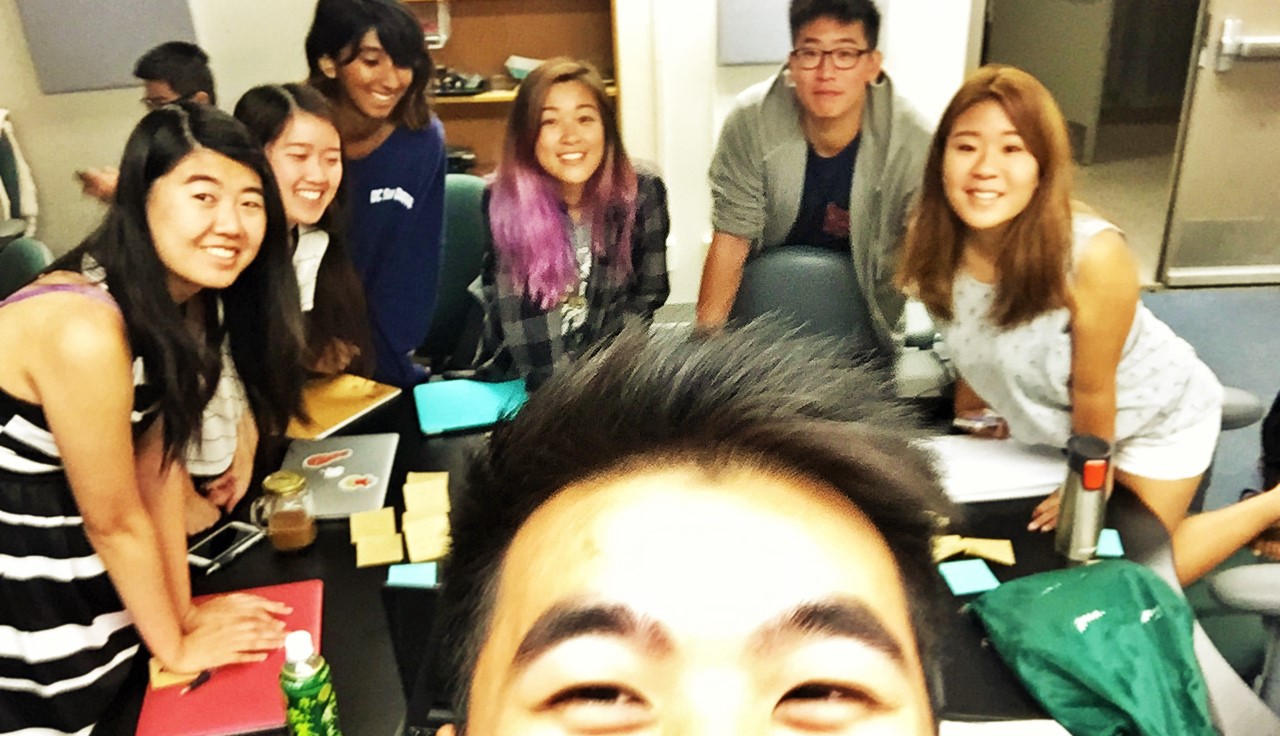
We are a team of 7 at UC San Diego and we aspire to utilize the next 10 weeks as part of COGS 187A to put to test our creativity, curiosity, skills and ability as a team.
Members:
Alex Kim, Annie Chen, Fairy Bui, Jamie Moon, Kathy Hoang, Kenny Nieh, Yashna Bowen
As a group of individuals with diverse backgrounds, experiences and interests, we decided to create Team Potato in order to be able to innovate and design something that reaches out to people and can serve a need in today’s society.
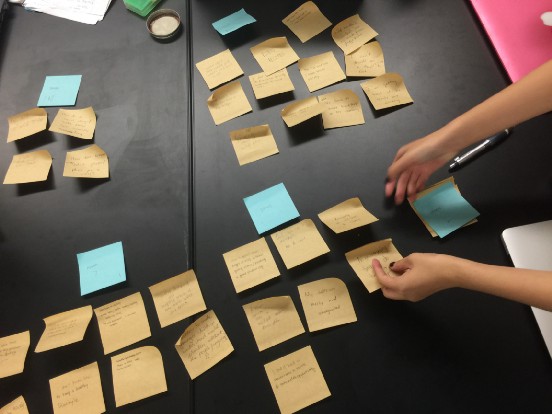
We followed a series of steps to come up with and narrow down on the problem space we wanted to tackle:
Top Choices: A Need for Sketching/Art Inspiration everyday and A need for Color Theory Explanation for beginning designers.
After further discussion our team decided to go with our first prompt and explore how we could help others sketch and get inspired to do art.
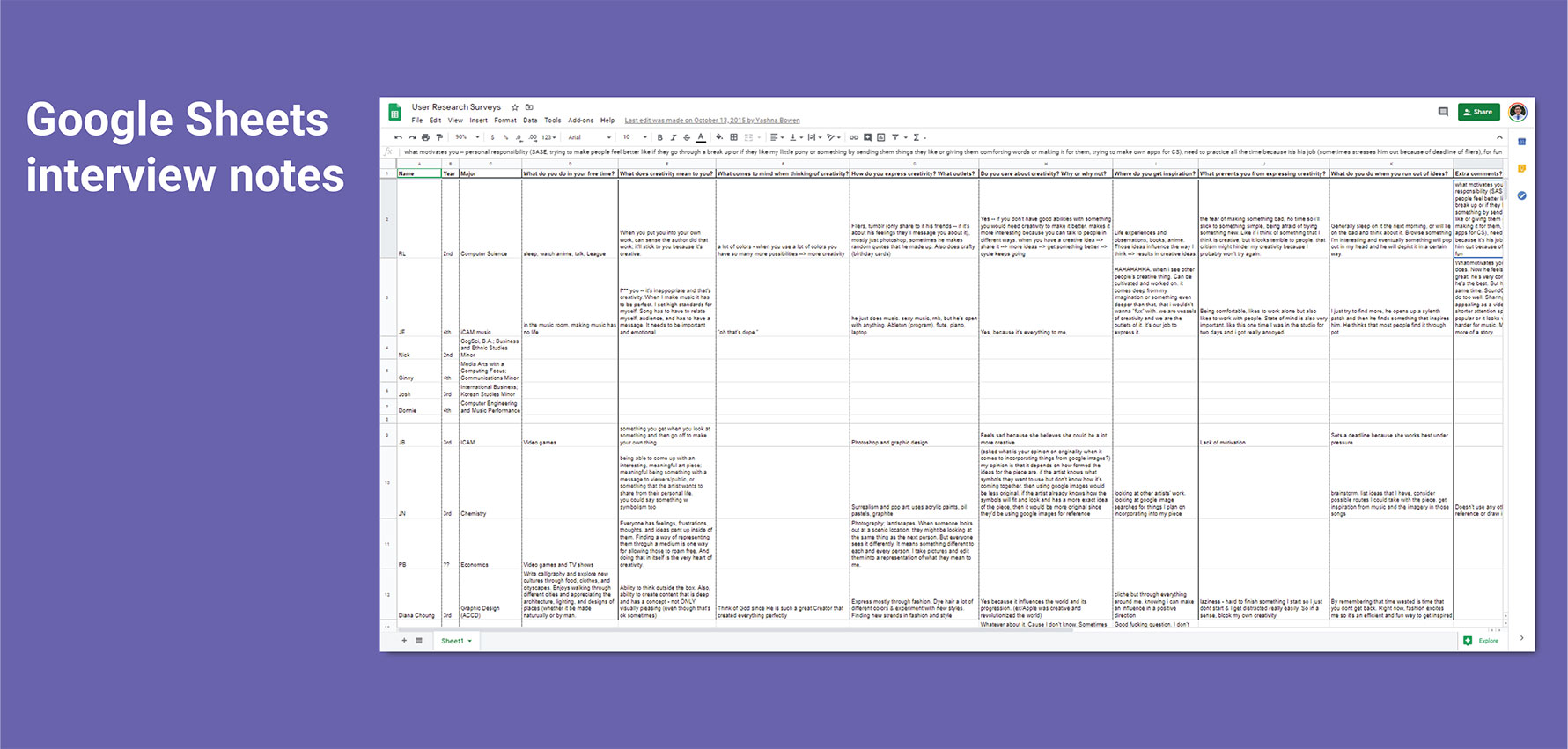
Now that we had our intial problem statement each team member conducted 3–4 user interviews with fellow UCSD students in order to gain more insight on creativity as a whole, how others find inspiration, and personal feelings towards art.
We had a general outline for our interviews but kept it as open-ended as possible. The goal of these interviews was to discover more about the students and their approach to creativity. We put our finidngs collectively in a google sheet.
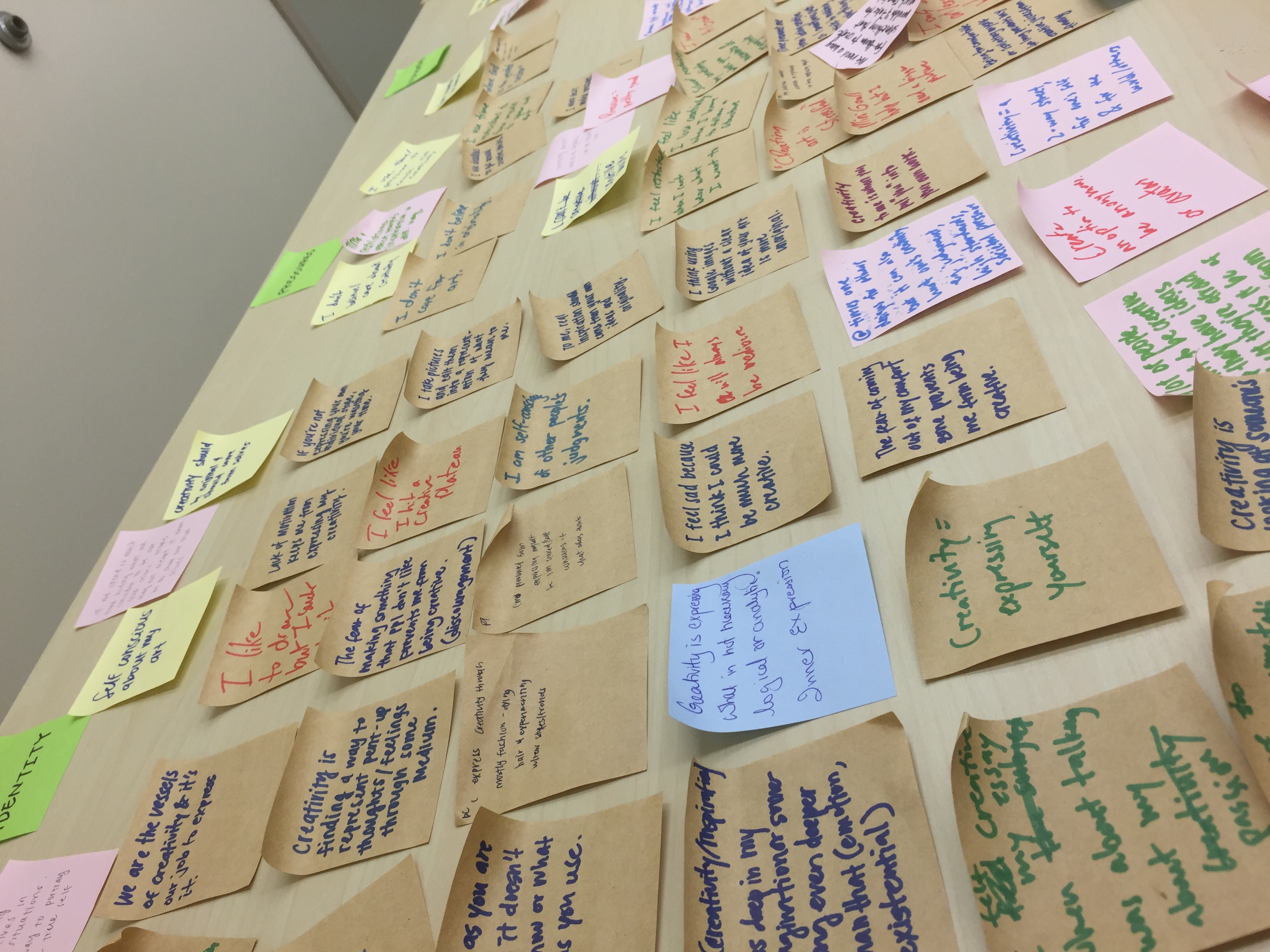
After our interviews with peers it was time to share findings to fellow teammates, familiarize ourselves with the stories we collected, and draw conclusions.
Affinity Diagram
To facilitate the process of familiarizing ourselves with the data, an affinity diagram was created. The affinity diagram is used as a method of organizing user data by writing down all of the information obtained from user interviews onto post-it notes. The post-it notes are then categorized by main points, which are then organized into broader themes. By interacting with the data in this way, the group became more familiar with all of the data and each team member was able to draw their own conclusions from the findings.
A few overarching themes seemed to arise from the data. Art and creativity seemed to be intricately linked to self-identity for many of those interviewed, and most seemed to favor being in positive environments when doing creative work. Having structure (for example, deadlines or strict guidelines) can either negatively or positively affect creative output. There were many different resources that people used to find inspiration, such as Google Images, but social media was a common source of inspiration for many. Creativity as a whole was generally viewed as a mixing pot, as those we interviewed tended to borrow from works that they felt inspired by.
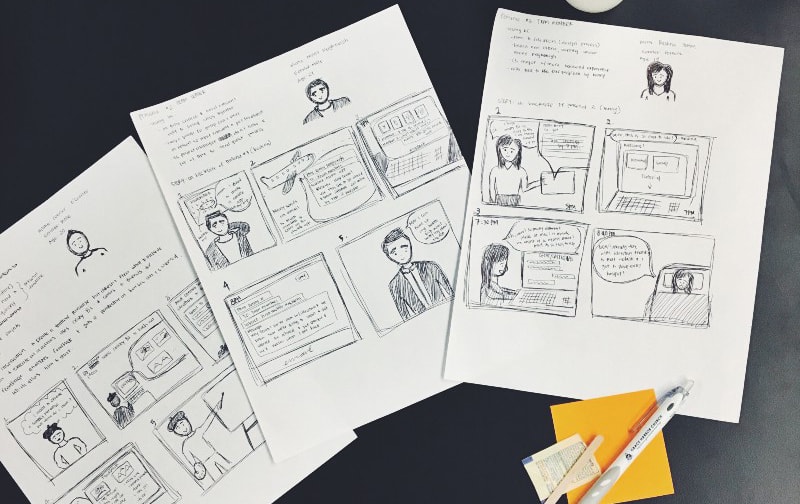
After interviewing friends, classmates and faculty. We found some interesting things about creativity and started to create personas based on our notes and highlighted some of the important findings. These personas included information such as demographics, personal interests, motivations, personality traits, and other info.
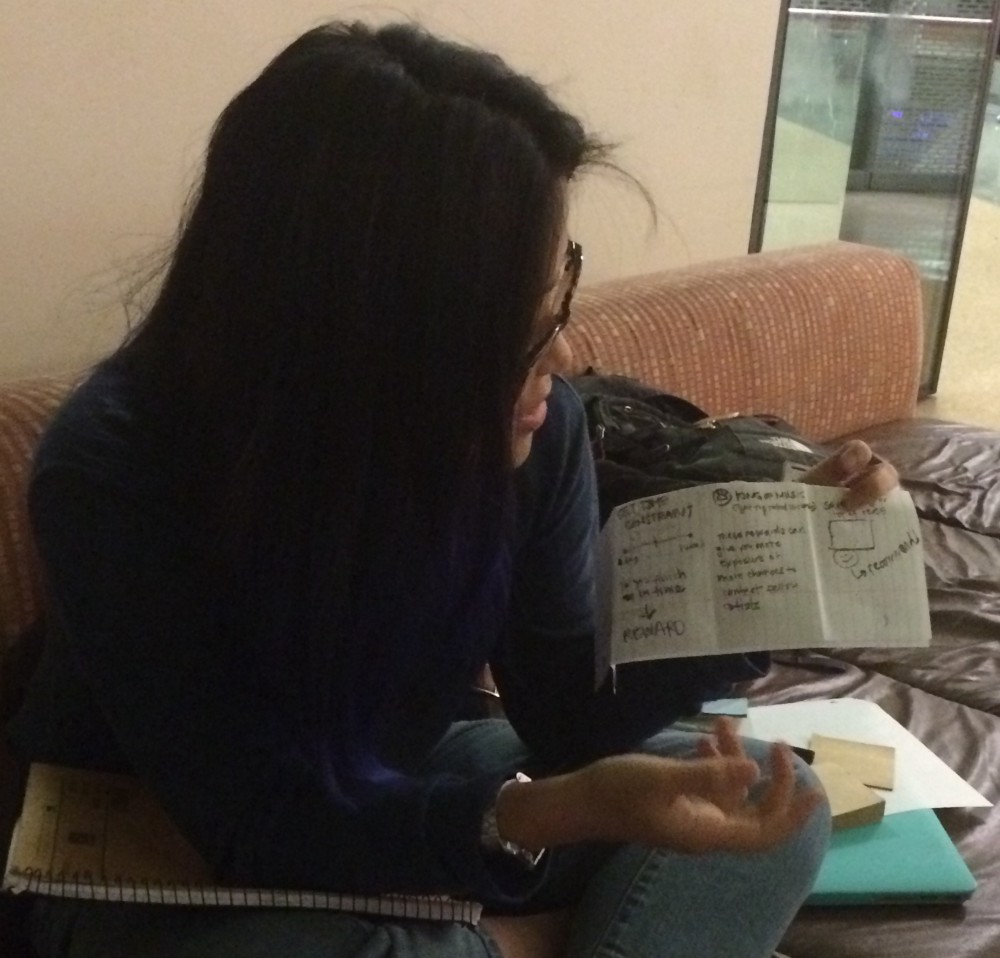
These conclusions and personas helped us to see what our users valued most in terms of creativity and doing creative work, as well as framing what users really needed to accomplish their creative goals. It was apparent that there were a diverse range of needs, so the team formulated a variety of different concepts to try to address those user needs.
A round of Crazy 8’s, a method of extremely rapid ideation, allowed the team to apply their understanding of user needs to produce potential solutions. Some of these ideas include a personal inspiration board, online “Crazy 8’s”, and a website that helps users make development plans for their work.
In order to keep our options open, we’ve decided to parallel prototype with some of these ideas to get more feedback from users. Choosing one idea right away without researching what works or not could constrain the team’s approach to the design. Parallel prototyping would ideally show what elicits the best responses from users without having to fully commit to a single idea right away.
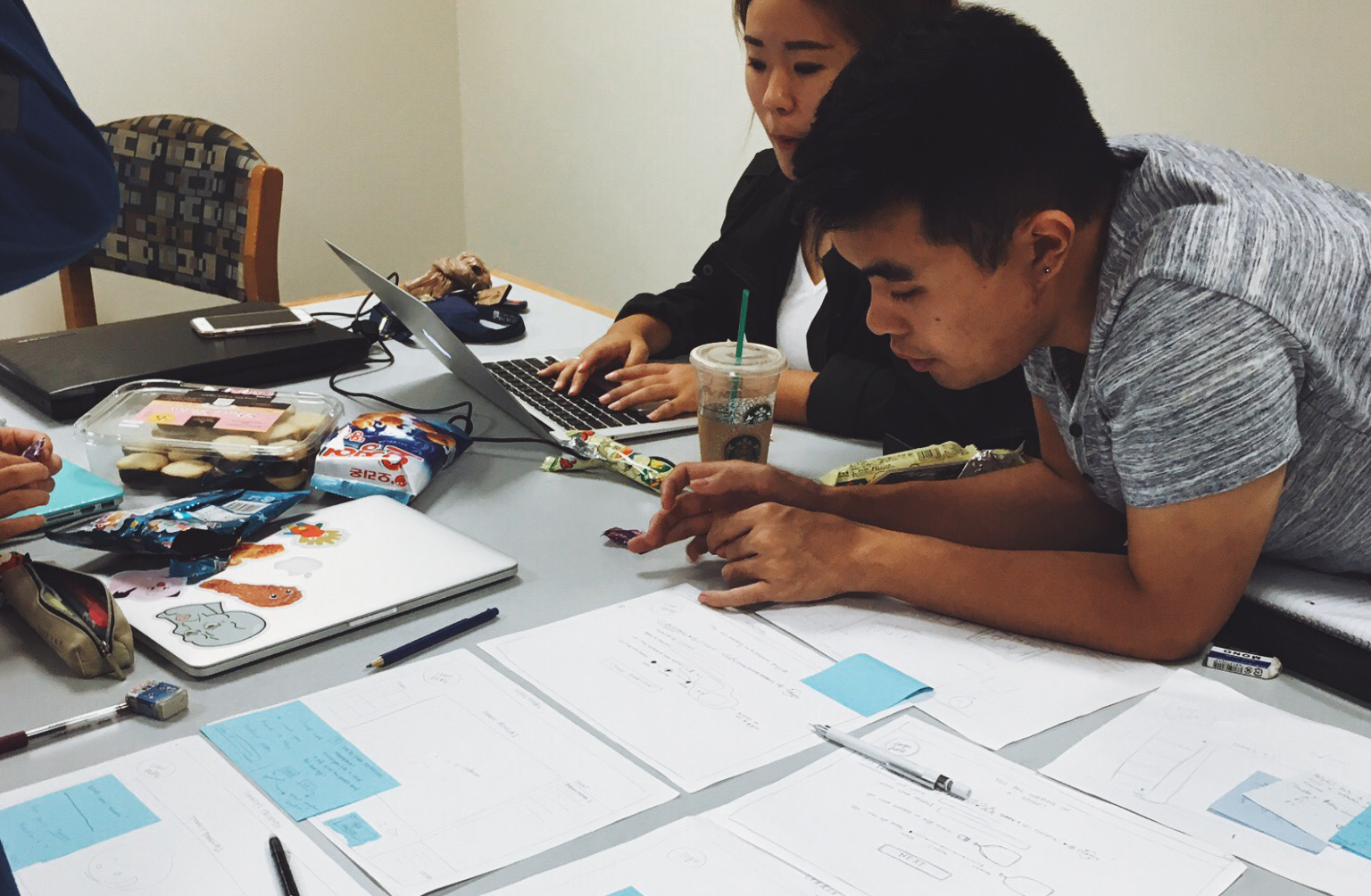
"Crazy 8s The Website"
Creating a digital platform for Crazy 8s (the brainstorming activity we did earlier). This platform would utilize time pressure and peer collaboration to help push students generate ideas.
"Lesson Exchange"
Meet up with someone and exchange lessons with each other, e.g. one person guitar, the other person cooking.)
"YikYak for Inspiration/Creativity"
You post something anonymously of something that inspired you (e.g. quote, picture of something, a piece of art, a song, etc.) and people can upvote one's they like.
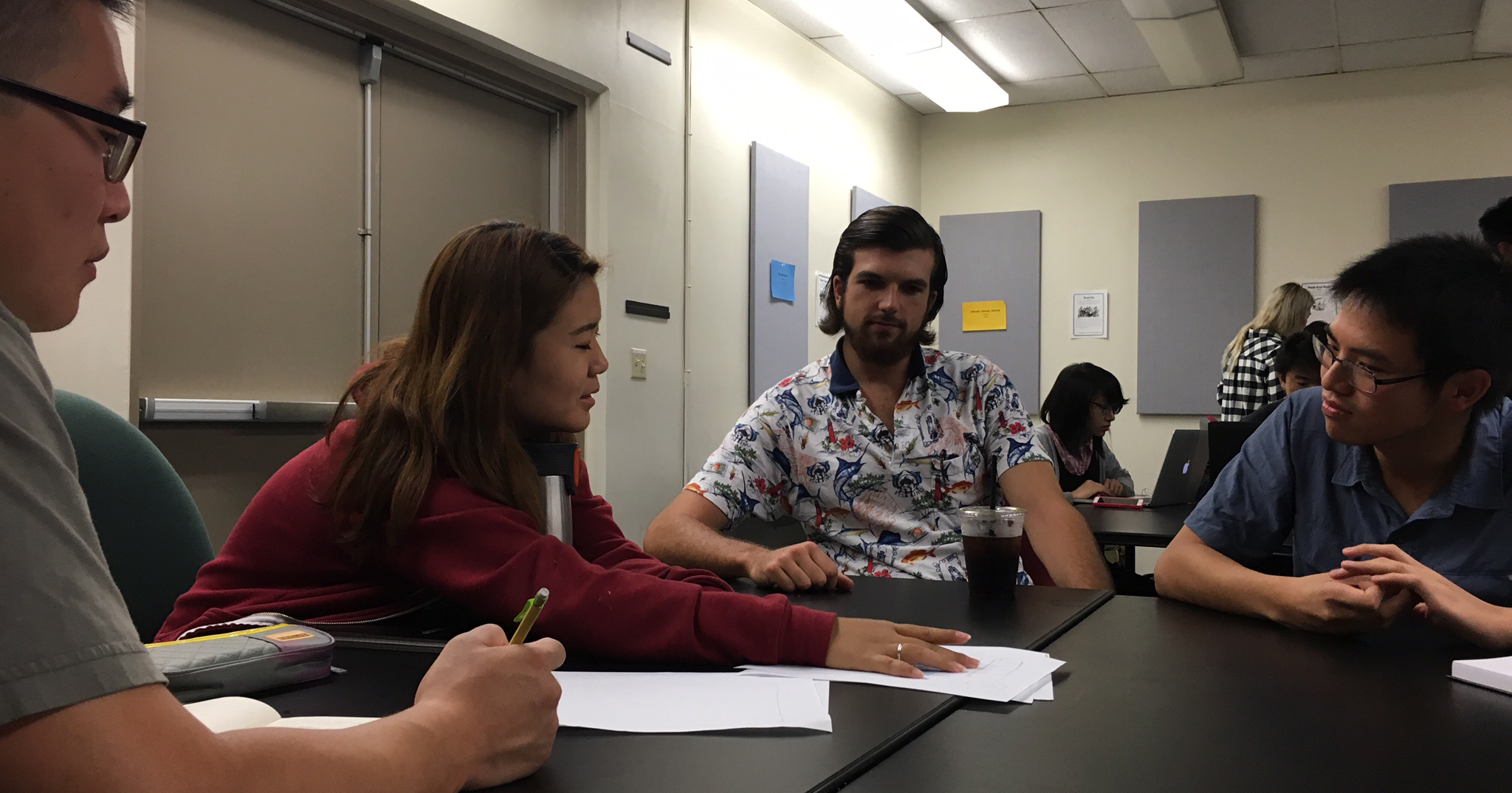
Now that we had a few concepts and quick paper prototypes we scheduled some time with our classmates to test out the ideas. Our paper paper prototype user tests were conducted in teams of 2 with one moderator who flipped the pages and one person taking notes. We asked the our testers to Think Out Loud as they went through the prototypes so that we could gather what was going on in their head and where they had difficulty.
After this intial testing phase, it was determined that our Crazy 8s website idea had the most buzz around it and made sense to the users in the our studys.
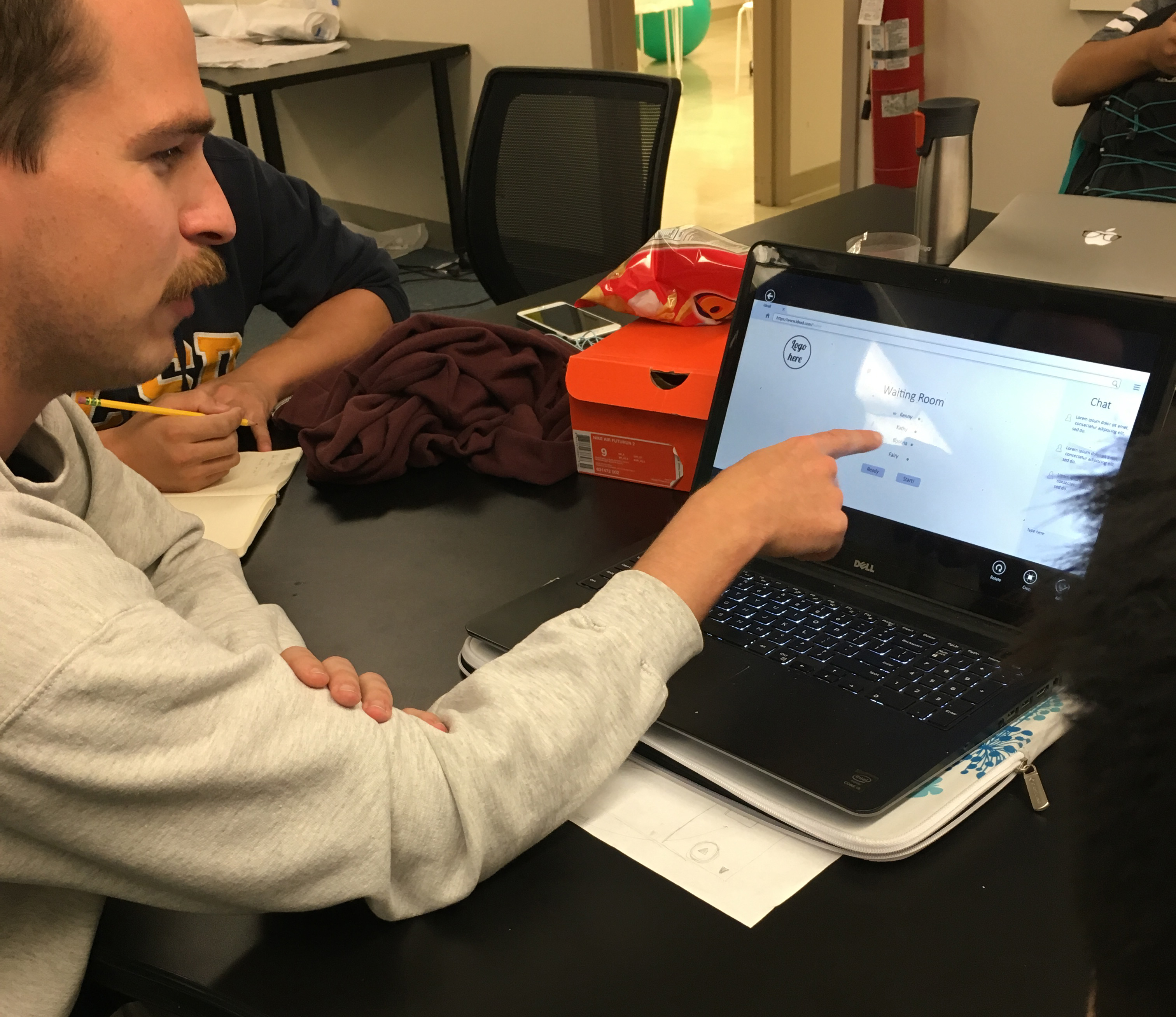
After deciding to move ahead with The Crazy 8s Website we created a lo-fi digtital prototype to test with more users. At this point the site has no branding or colors. Our goal was to see if the information on the screens made sense to the users and if they could get through the flow easily
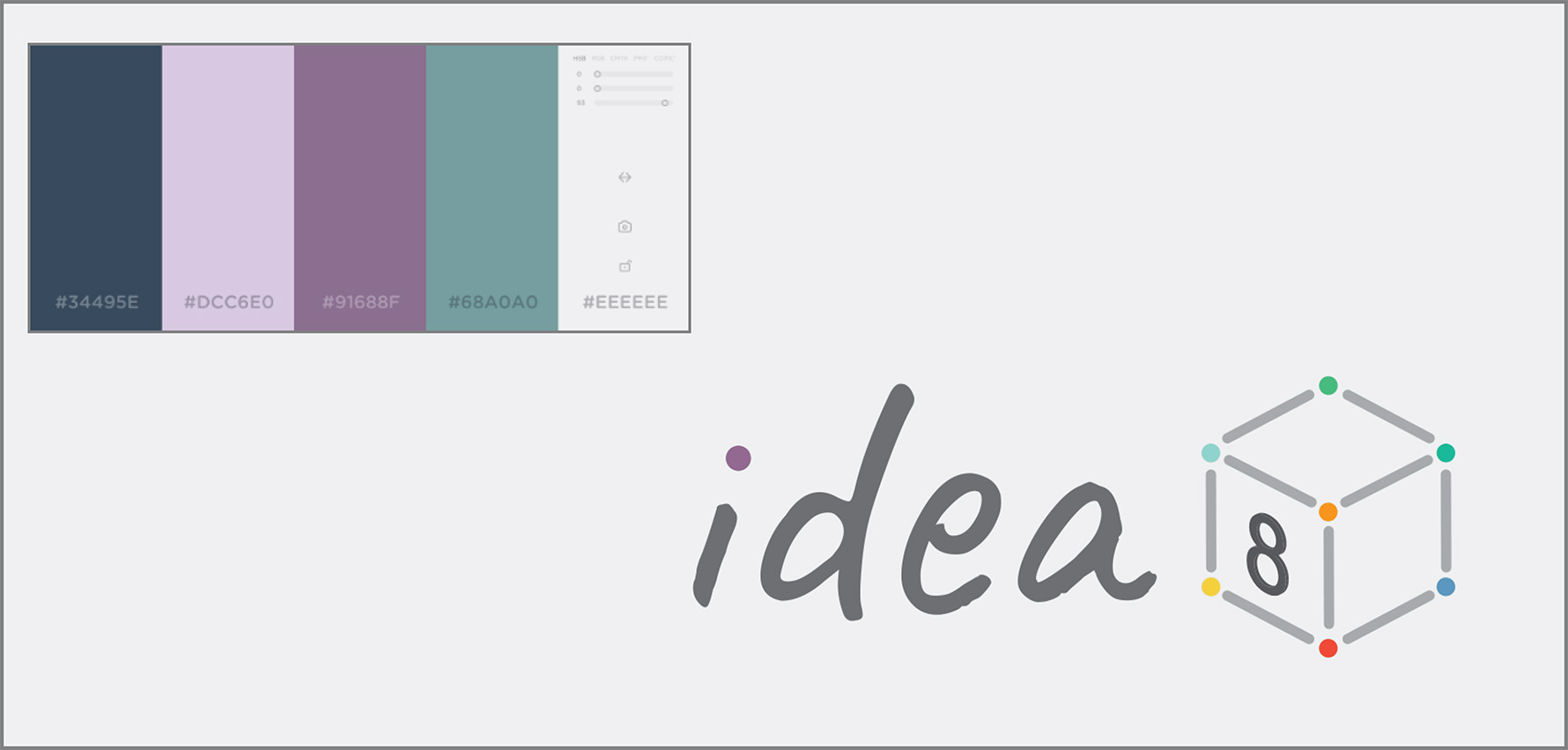
It was time to design the branding and logo for our site
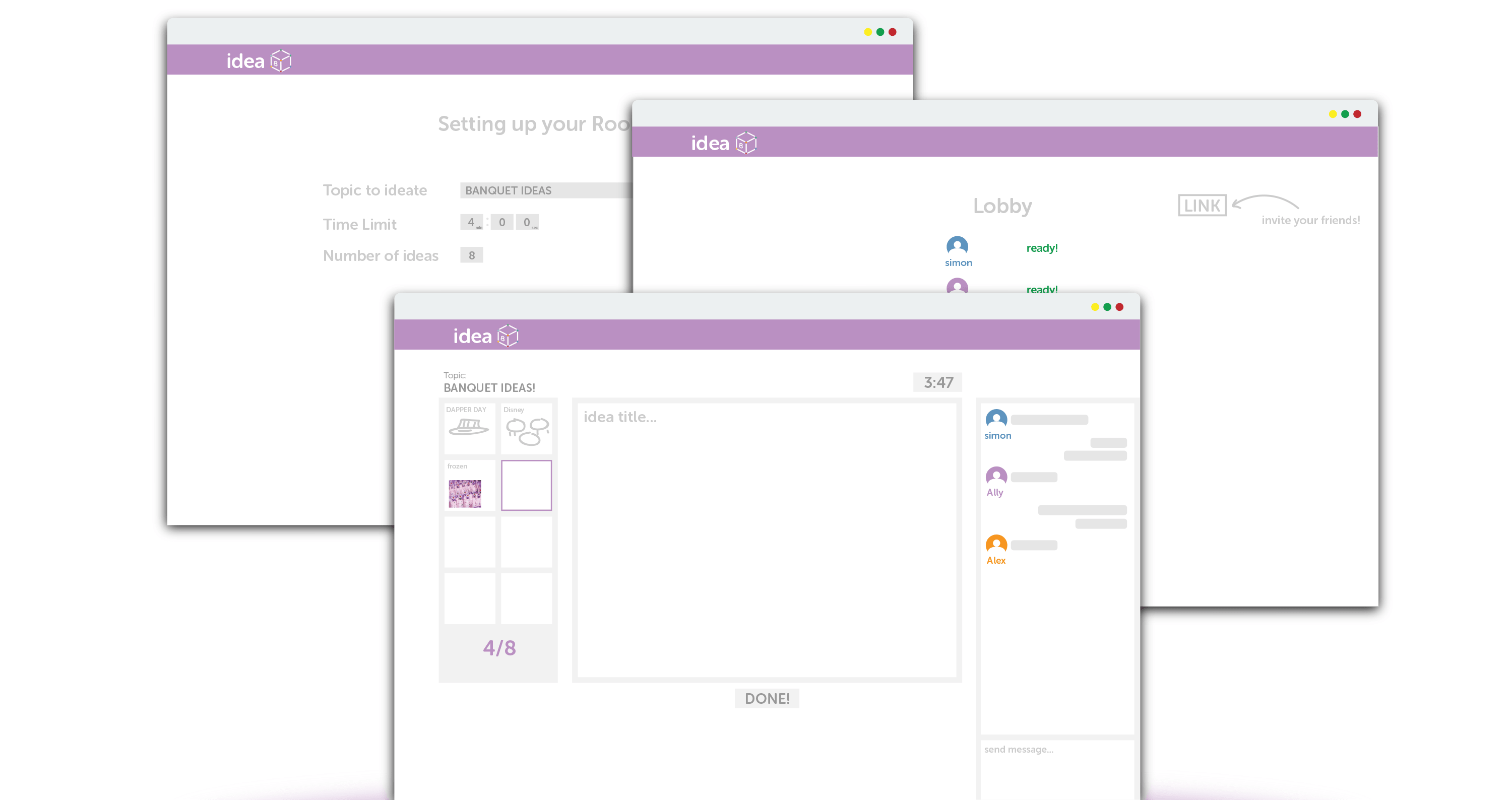
It was time to design the branding and logo for our site
